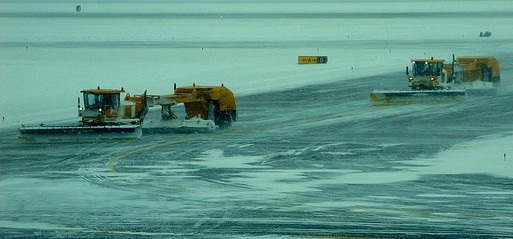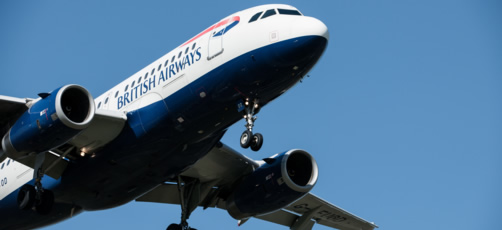Aviation and the fight against climate change
7 December 2015Later today I will be speaking at the UN Climate Change Summit in Paris to demonstrate some of what we’re doing to deliver CO2 emission reductions.
Talking about aviation at a summit aiming to help minimise climate change may seem incongruous. Aviation produces greenhouse gases, that’s a fact we can’t ignore and yet at the same time the world has become addicted to flying.
Aviation provides millions of jobs and billions in economic value so simply giving it up isn’t a realistic option. Whether you fly or not, each of us benefits from the wider value aviation brings to society. However, as an industry we must do everything we can to reduce its environmental impact.
We have already seen excellent examples of this through the design of ever greener aircraft and engines, but also within the sphere of air traffic management where we can help positively influence the efficiency of every phase of flight.
But there’s still so much more we can do. Being present at COP21 gives us an opportunity to hear other views and ideas, which in turn allows us to learn from others on how NATS can continue to deliver more improvements.
Recently, NATS was fortunate enough to be chosen to feature in ATAG’s ‘Climate Change Solutions’ – a compendium of some of the best the aviation industry has to offer in terms of sustainability. I’ll be talking through some of the examples where we’ve been able to deliver real environmental savings at today’s event.
Continuous Descent Operations
NATS has taken a very proactive role in leading the Sustainable Aviation Continuous Descent Operations (CDO) campaign where we are reaching beyond our immediate sphere of responsibility to influence airlines and airports and encourage cleaner, quieter flying.
A continuous descent means that an aircraft remains in smooth descent profile instead of descending in a series of steps. It means an aircraft stays higher above the ground for longer so is both quieter and more fuel and environmentally efficient.
The unique aspect of this particular campaign has been the large scale simultaneous effort across 15 ATC units, 8 airlines and 23 airports to jointly deliver a step change in CDO performance.
After the first four months of the campaign, July to October 2014, Continuous Descents from 6000ft across the top 20 airlines at the 15 airports where NATS provides the ATC service was up 3.4% compared to 2013, delivering almost 10,000 more continuous descents than the same four months the previous year.
And after the first six months, the campaign had achieved over 18,000 more continuous descents than the same six months the previous year.
Coast to Coast
An air traffic control system with enhanced features has been implemented at our control centre in Prestwick and at NAV CANADA’s centre in Gander, Newfoundland to help controllers as they direct aircraft across the North Atlantic – the busiest oceanic airspace in the world.
The technology is known as the Gander Automated Air Traffic System (GAATS+) – the world’s most advanced oceanic air traffic system.
The GAATS+ system features increased automation of data exchange with other air traffic facilities and integrates a series of safety net tools such as conflict prediction and conflict alert. It also provides controllers with a snapshot of current and planned traffic as well as available route profiles, allowing the controller to easily identify an aircraft’s preferred and most environmentally friendly route.
Topflight
TOPFLIGHT was a NATS led project designed to test elements of the SESAR concept in a real operational environment.
Around 100 transatlantic flights were optimised to maximise their efficiency and to save fuel and emissions. Measures included providing an initial Oceanic profile before departure; use of continuous climb and descent profiles and direct routings; the use of more flexible Oceanic clearances; the flexible use of military airspace; and reduced engine taxiing.
The project analysed a significant amount of data on each flight in order to then understand where efficiencies had been made. By combining the different operational elements, the trial helped to save up to half a tonne of fuel per-flight. That’s the equivalent to nearly 1.6 tonnes of CO2.
It will be great to be able to share these examples with delegates in Paris, but to also learn from the experience of an international audience. The common theme through them all isn’t simply the smarter use of new technology; it’s the fact that sustainability is embedded into the working lives of every controller. It’s when everyone considers sustainability to be part of the day-job that you can really start to make a difference.
Comments
Please respect our commenting policy and guidelines when posting on this website.






13.01.2018
22:33
Brandon Fouts
How about monitoring pollutants from jet fuels?
And monitoring what actually comes out of the Jet Engine exhaust?
I think almost 30 metals in jet fuel – Lead, Aluminium, Barium etc.